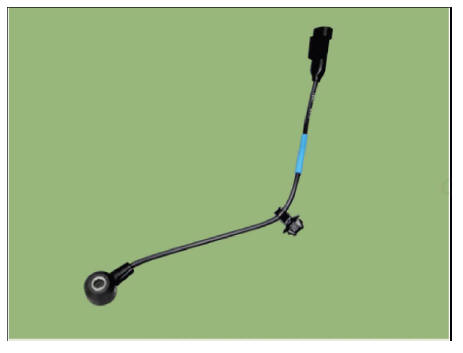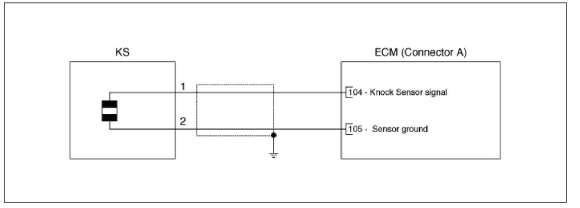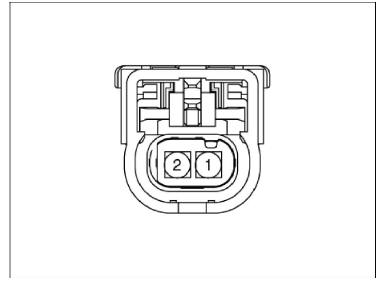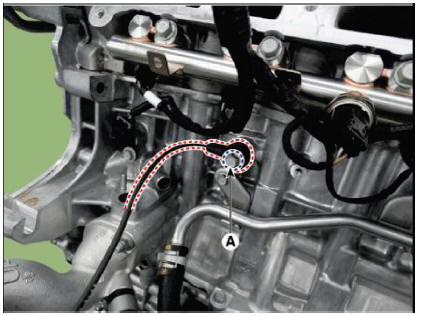Hyundai Tucson: Knock Sensor (KS)
Description
Knocking is a phenomenon characterized by undesirable vibration and noise and can cause engine damage.
Knock Sensor (KS) is installed on the cylinder block and senses engine knocking. When knocking occurs, the vibration from the cylinder block is applied as pressure to the piezoelectric element. At this time, this sensor transfers the voltage signal higher than the specified value to the ECM and the ECM retards the ignition timing.

Specification

Circuit Diagram

Harness Connector

Removal
- Turn ignition switch OFF and disconnect the battery negative (-) terminal.
- Remove the intake manifold.
(Refer to Engine Mechanical System - "Intake Manifold")
- Remove the MHSG.
(Refer to Engine Electrical System - "Mild Hybrid Starter Generator (MHSG)")
- Remove the installation bolt (A), and then remove the sensor from the cylinder block.
Tightening Torque : 18.6 - 24.5 N.m (1.9 - 2.5 kgf.m, 13.7 - 18.1 lb-ft)

Installation
WARNING
- Install the component with the specified torques.
- Note that internal damage may occur when the component is dropped. In this case, use it after inspecting.
- Install in the reverse order of removal.
READ NEXT:
 Heated Oxygen Sensor (H02S)
Heated Oxygen Sensor (H02S)
Description
Heated Oxygen Sensor (HO2S) consists of the zirconium and the alumina and is
installed on upstream
and downstream of the Manifold Catalyst Converter (MCC).
In order that this sensor normally operates, the temperature of the sensor
 Exhaust Gas Temperature Sensor (EGTS)
Exhaust Gas Temperature Sensor (EGTS)
Description
Exhaust Gas Temperature Sensor (EGTS) is installed on Gasoline Particulate
Filter (GPF) senses the
temperature of exhaust gas flowing into. When pre-determined engine condition is
set, ECM burns
soot gathered in GPF with exhaust ga
 EGR Temperature Sensor
EGR Temperature Sensor
Description
EGR temperature sensor is used for temperature measurement and EGR bypass
valve function
diagnosis as well as thermal protection of EGR system.
Specification
Type : Thermistor type
Circuit Diagram
Harness Connecto
SEE MORE:
 Mass Air Flow Sensor (MAFS)
Mass Air Flow Sensor (MAFS)
Description
MAFS uses a hot-film type sensing element to measure the mass of intake air
entering the engine, and
send the signal to ECM.
A large amount of intake air represents acceleration or high load conditions
while a small amount of
in
 Engine oil
Engine oil
Checking the engine oil level
Engine oil is used for lubricating,
cooling, and operating various hydraulic
components in the engine. Engine oil
consumption while driving is normal,
and it is necessary to check and refill the
engine oil regularl
Information
- Home
- Hyundai Tucson - Fourth generation (NX4) - (2020-2023) - Owner's Manual
- Hyundai Tucson - Fourth generation (NX4) - (2020-2023) - Workshop Manual